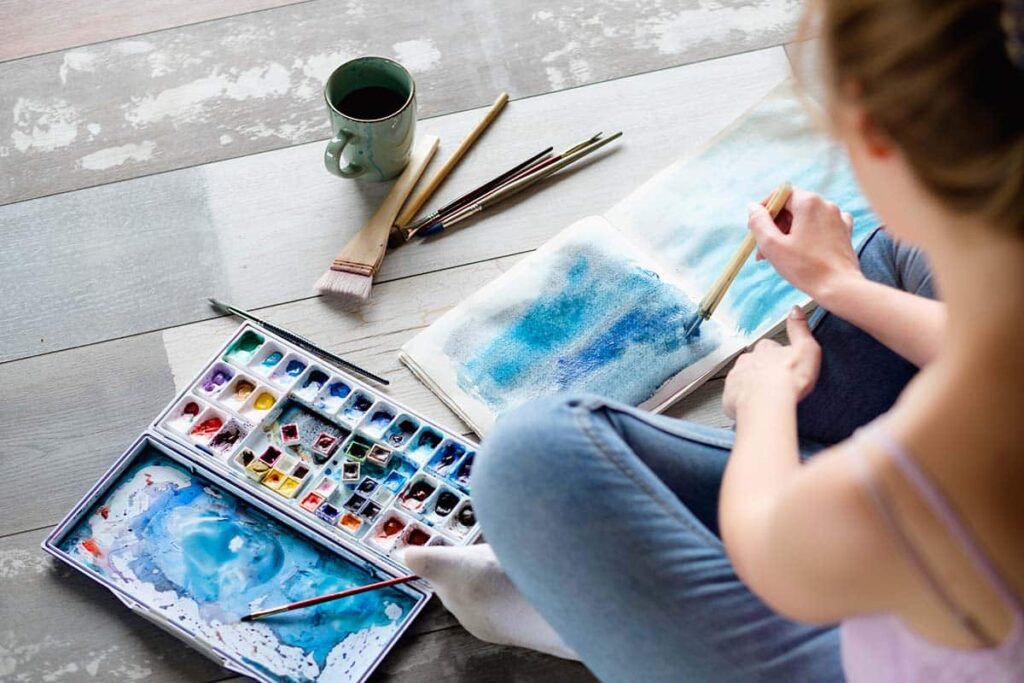Art therapy is a type of psychological therapy that uses the process of making and creating art to improve mental and emotional well-being. It is based on the idea that the creative process involved in making art can help people to resolve conflicts and problems, develop interpersonal skills, manage behavior, reduce stress, increase self-esteem and self-awareness, and achieve insights into their own thoughts and feelings.
Art therapy can be an effective tool for treating a wide variety of mental health conditions, including anxiety, depression, post-traumatic stress disorder (PTSD), eating disorders, substance dependency, and more. It can be used as a standalone treatment or as part of a comprehensive treatment plan that also includes other therapies, such as cognitive-behavioral therapy (CBT) or medication. In our art therapy center in Greenville, FL, you’ll find a holistic approach that can help you reclaim your story.
Types of Art Therapy
There are many different activities that can be utilized in art therapy, and different types of art therapy will focus on different types of art-making. From doodling and carving to making collages or pottery, art therapy can take many different forms. Here are three of the most common types of art therapy activities:
1. Painting
Painting is a form of art therapy that allows you to express your emotions through color and brushstrokes. It can be relaxing and therapeutic, helping you to process and make sense of your emotions in a non-verbal way. Painting can also be used to boost self-esteem and confidence by creating something beautiful that is entirely your own.
Whether with acrylics, watercolors, or oil paints, painting can be a therapeutic and cathartic experience.
2. Drawing
Like painting, drawing is a form of art therapy that uses color and lines to express emotions. However, drawing may be a better option for those who feel overwhelmed by a blank canvas or who want to focus on smaller details. Drawing can help to improve problem-solving skills and kinesthetic understanding (the ability to understand how objects move in space).
3. Sculpting
Sculpting is a type of art therapy that involves working with clay or other materials to create three-dimensional objects. It can be used to:
- Relieve stress
- Explore negative emotions
- Boost self-esteem
It can be difficult to talk about past trauma or to express difficult emotions verbally. Sculpting can be a helpful way to work through these types of issues in a supportive and controlled environment.
The Benefits of Art Therapy
Why art therapy? This holistic approach complements other types of therapy and can offer a creative outlet to those who may not feel comfortable talking about their emotions. One of the reasons why art therapy is so helpful is because it’s not necessary to be an experienced artist to benefit from the process. The focus is on the act of creating, not on the final product.
Many participants find that the act of making art is helpful even after completing a treatment program. Creative pursuits can become an ongoing source of stress relief, helping to prevent relapse and promote long-term recovery.
Find Art Therapy at Honey Lake Clinic
For those who are working towards wholeness and transformative growth, Honey Lake Clinic offers art therapy as part of our comprehensive treatment programs. Art therapy on our campus is completed under the supervision of registered art therapist and licensed Christian counselor Candace Guillory. It provides an outlet for expression and creativity while also teaching coping skills and increasing self-awareness and self-esteem. Every individual in our care receives a personalized treatment plan that includes a range of therapies based on their unique needs.
To learn more about our art therapy program and other approaches to treatment offered at Honey Lake Clinic, call 888.428.0562 or connect with us online today.
